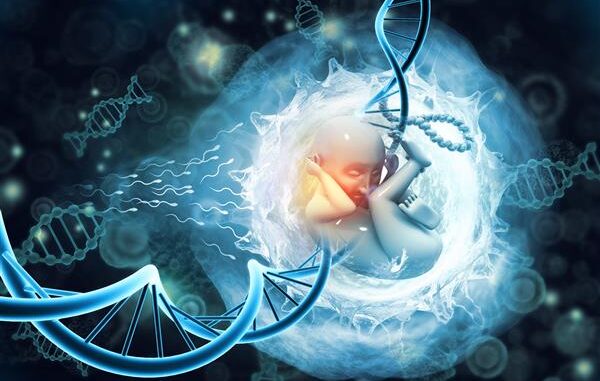
Israeli scientists have grown the early stages of a human embryo-like entity without the use of sperm, eggs or a womb.
The lab grown ’embryo model’ even releases hormones that triggered a positive pregnancy test.

BYPASS THE CENSORS
Sign up to get unfiltered news delivered straight to your inbox.
You can unsubscribe any time. By subscribing you agree to our Terms of Use
Latest Video
The alleged purpose of the embryo however, is to provide an ‘ethical’ way of monitoring early human development. Synthetic embryos would not be allowed to progress beyond a few weeks.
Metro reports: During the first 14 days after an egg is fertilised by a sperm, the nascent embryo undergoes dramatic changes. It is at this point that myriad developmental disorders and birth defects can arise, but the cause of these is poorly understood.
The first two weeks are also a major source of miscarriage.
Speaking to the BBC, co-author Professor Jacob Hanna, from the Weizmann Institute of Science, said: ‘It’s a black box and that’s not a cliche – our knowledge is very limited.’
Across the world teams are racing to develop better ways to understand this crucial time. Earlier this year a team from the University of Cambridge and California Institute of Technology created synthetic embryos using only stem cells.
The latest breakthrough, published in the journal Nature, also used stem cells – and the team describes their results as the first ‘complete’ embryo model, one that mimics key cells and structures throughout the first two weeks of development.
‘This is really a textbook image of a human day-14 embryo, [which] hasn’t been done before,’ said Professor Hanna.
‘It closely mimics the development of a real human embryo, particularly the emergence of its exquisitely fine architecture.’
The team used a cocktail of chemicals to ‘coax’ the stem cells into transforming into four key embryonic cells – epiblasts, trophoblasts, hypoblasts and extraembryonic mesoderm cells.
These were then allowed to grow until reaching a stage equivalent to a two-week old embryo after fertilisation.
‘An embryo is self-driven by definition, we don’t need to tell it what to do,’ said Professor Hanna. ‘We must only unleash its internally encoded potential.
‘It’s critical to mix in the right kinds of cells at the beginning, which can only be derived from naive stem cells that have no developmental restrictions.
‘Once you do that, the embryo-like model itself says “Go!”.
In many countries, 14 days is the legal cut-off for normal embryo research.
However, these ’embryo models’ are not legally seen as embryos and are not governed by the same laws.


